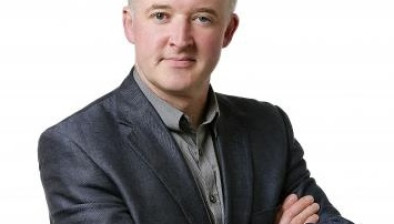Lyndy Cantillon: Facts on the Health Service Executive’s X-ray debacle

Lyndy Cantillon
Lyndy Cantillon comments on a recent health debacle which saw patients’ X-rays misread.
Over twelve months ago the Health Service Executive announced that they were carrying out a review into some 46,000 CT scans, ultrasounds and chest X-Rays reported by an individual consultant radiologist at University Hospital Kerry (UHK) between the period of March 2016 and July 2017. This week a number of patients were contacted and informed that their X-rays had been misread and that this had adverse consequences for them.
This is regrettable and very sad as it seems as if a number of patients will have had very significant adverse consequences as a result of the delay in interpreting their X-rays correctly. It is disappointing also that it has taken this length of time to inform the affected patients, but it has to be accepted that there were a large volume of X-rays to be reviewed (approximately 46,000) and it was important that it was done correctly. It seems that this careful review has uncovered patients with undiagnosed cancer who had not previously been identified and that is to be welcomed.
Sometimes when these adverse events occur involving large numbers of patients there is a fear that there may be an avalanche of medical negligence claims. I think it is important to allay those fears where possible. It is important to note that not every misreading of an X-ray will result in a successful medical negligence claim. There is a wide margin of error given to radiologists in the interpretation of X-rays. The fact that one radiologist may see something that another may not, does not necessarily mean that the latter is negligent. In order to establish if a radiologist was negligent, it is necessary to show that no reasonable radiologist (not even a minority) would have missed what the radiologist in question has missed.
In addition, one has to establish not alone negligence in the reading of the X-ray but also that there is an adverse consequence because of the misreading, i.e. that an injury has occurred that would have been prevented by correct reading of the scan and earlier intervention. This is what lawyers call “causation”. You have to show that the delay in reading the X-ray correctly has caused an injury that would otherwise not have occurred but for the missed X-ray. We know that a small number of patients have sadly passed away since the misreading of their scans and some of these may well have grounds for fatal proceedings depending on the expert view. Hopefully, it will be the position for most other patients that the delay has not been causative of any injury.
Medical negligence cases are costly for the patient and the Health Service Executive and are only embarked upon following the commissioning of expert reports such as radiologists and possibly oncologists in this instance.
It is to be hoped that the initial fears of an avalanche of claims will not be in fact realised, not so much for the avoidance of the costs but for the avoidance of pain and suffering.

Lyndy Cantillon is a partner at Cantillons Solicitors, Cork. You can view her profile here.









